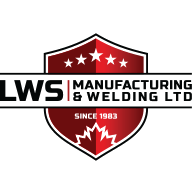Types of Metal Fabrication Processes
When working with aluminum, steel, and other forms of metal, there are many different techniques and processes that can be used to produce finished metal products. Knowing about some of the different types of metal fabrication processes and their differences is crucial for choosing the right method(s) for your project. As a leading provider of comprehensive fabrication and welding services, the team at LWS Manufacturing & Welding knows that the metal fabrication process can be extremely complex. That is why we have provided some information on 4 widely utilized types of metal fabrication processes to help you understand their unique qualities and what they are typically used for.
Learn about some effective methods for welding stainless steel.
4 Common Metal Fabrication Processes
The following metal fabrication processes are commonly used to produce a variety of metal products:
1. Shearing
In this process, one long and straight cut is achieved by combining two tools. One tool is placed above the metal and the other is located below for applying pressure. The upper blade forces the metal down onto the stationary lower blade and fractures it. The fracture then spreads inward for complete separation, leaving sheared edges that are usually burred. Shearing is ideal for cutting smaller lengths and materials of different shapes since the blades can be mounted at various angles to reduce the required force.
2. Forming
Also known as folding, forming fabrication is a straightforward process that manipulates metal materials to bend them in a certain way. There are several methods of forming in metal fabrication, the most common method utilizes a brake press. In this method, the piece of raw metal is held between a punch and a die. Here, the punch is used to generate pressure onto the raw material to help it reach the desired shape. This method is extremely common for sheet metal shaping.
3. Rolling
Rolling is a metal forming process where metal materials are passed through one or more pairs of rolls to reduce the thickness, make the thickness uniform/consistent, or impart a desired mechanical property to the metal. Metal rolling is most commonly used to make sheet metal or plate metal, making it a widely utilized service for various projects and industries.
4. Cutting
In this process, a metal workpiece is cut via plasma, laser, or another method to split it into smaller sections. While sawing is the oldest method of cutting, modern methods include laser cutting, waterjet cutting, power scissors, and plasma arc cutting. Some methods of cutting are performed manually, while others are left to computer numerical control (CNC) cutters. Cutting may be the first stage in a longer fabrication process or the only process used depending on the project requirements.
To learn more about our welding and metal fabrication services or to discuss the details of your project, get in touch with the team at LWS Manufacturing & Welding. We can be reached through our online contact form and will be happy to answer any questions you may have regarding our services.




